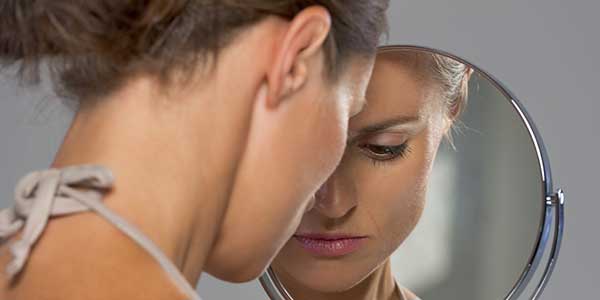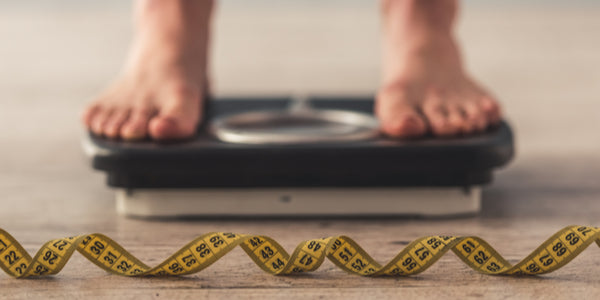
Body dysmorphia is actually a psychological state in which a person becomes obsessed with slight, or even imaginary, defects in their appearance. It could be any type of obsession with looks, such as muscle definition, body weight, skin tone, and even things like eyebrow shape, or cheekbones prominence. Not only is a person with body dysmorphia obsessed with their appearance, they also fret constantly about the defects and/or imperfections they see in the mirror. The term dysmorphia means deformity or abnormality in the shape, color, or size of a specified part of the body, and key sign of body dysmorphia disorder is having an obsession with these perceived deformities and focusing on them, even if they are not really there.
This disorder is in the same family as the obsessive compulsive spectrum disorders, and it's important to recognize the symptoms and seek help to improve social ability and recover quality of life for those who suffer from it. Body dysmorphia disorder is more common than disorders such as anorexia nervosa and schizophrenia, affecting about somewhere between 3-13 % of the US adult population, and about 5% of the adolescent population affecting both boys and girls alike, with slightly higher rates in girls. The onset of body dysmorphia usually occurs before the age of 18, with most individuals reporting it began at age 13.
While we all have parts of our bodies we would love to alter and change - this disorder can be extremely dangerous, and is associated with high suicide rates. It can cause substantial suffering-even to the point of weeping and desperation in people who suffer from it, and is often socially devastating if left untreated.
Forty percent of individuals with body dysmorphia actively think about their body or skin between 3-8 hours per day, with an additional 25% reporting obsessing for more than 8 hours per day. This means the thoughts are intrusive, and cause much distress in the individual. Even more problematic, two-thirds of patients with body dysmorphia disorder report that other people take a special notice of them in a negative way, and even possibly mock or ridicule them because of their appearance. Feelings of rejection and even anger sometimes follow these assumptions - which according to the BABS 59 belief scale-are classified as delusional. Delusional doesn't imply these individuals are not mentally capable adults, but it does mean they are completely certain that their beliefs about their appearance are accurate. For some people, it fluctuates, with people reporting that sometimes they are convinced they are ugly, but not positive at other times.
Mirror checking and skin picking are common in people with appearance preoccupations, and are compulsive behaviors that are meant to reduce the anxiety and help process very painful emotions. Camouflaging with a hat, makeup, sunglasses is also very common and known as a safety behavior-again performed with the purpose of avoiding painful feelings. People who have body dysmorphia are more likely to miss days at work because of their shame of appearance. In one study that included high school age adolescents, 11% had permanently dropped out of school because of body dysmorphia.
Unfortunately, adults with body dysmorphia often abuse alcohol or drugs, with 42% of body dysmorphia individuals in one study reporting and alcohol-use disorder, and 30% reporting a cannabis-use disorder. Most of the time, people report the body dysmorphia disorder onset at least 1 year before the substance-use disorder, suggesting that if left untreated, this disorder can lead to serious life-management issues. One survey showed that 68% of individuals did feel that their body dysmorphia symptoms contributed to the substance use becoming problematic.
The current treatment option for people looking for help with managing their body dysmorphia typically includes SRI treatment-also known as serotonin reuptake inhibitors-combined with cognitive behavioral therapy. This combination treatment often has excellent results for people who seek help. Often people who suffer from body dysmorphia also suffer from an eating disorder as well, making it vitally important for them to get help from someone they trust.
For cognitive behavioral therapy, the treatments that work include cognitive restructuring, which helps the client focus on changing their appearance-related beliefs by exposing them, and then learning how to prevent them to reduce compulsive and safety behaviors. The goal is to help patients focus less on the minor parts of their looks and change their view of their body to a more 'holistic' view. This works very well in people who are actively seeking help with their disorder, with an excellent improvement in symptoms following a few months to a year of treatment in both men and women.
References:
Phillips KA. Body dysmorphic disorder. Dialogues in Clinical Neuroscience 2010;12(2):221-232. PMCID: PMC3181960.







